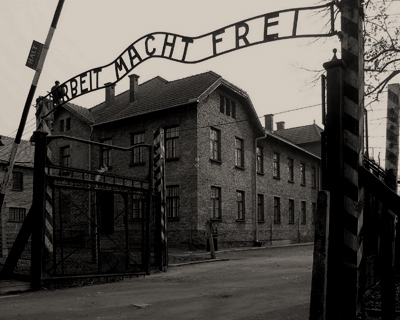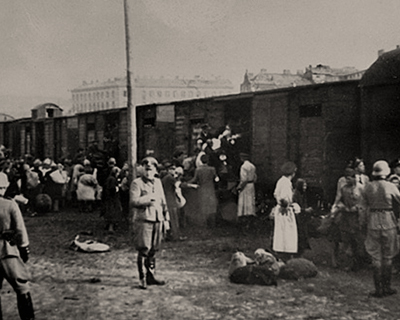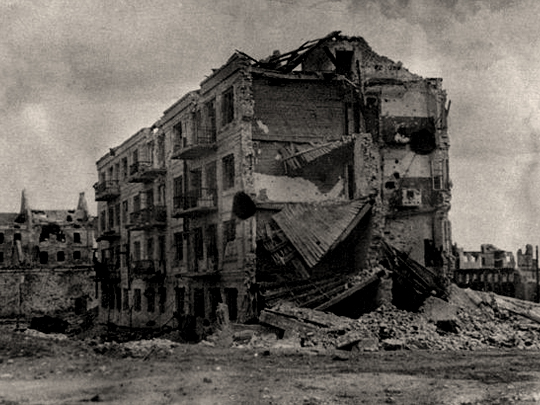Flickr / CC-BY-SA-3.0 / GFDL
1 – The Battle of Stalingrad
The Battle of Stalingrad was a major battle on the Eastern Front of World War II.
It saw Nazi Germany and its allies fight the Soviet Union for control of the city of Stalingrad (now Volgograd) in Southern Russia, from 23 August 1942 – 2 February 1943.
It is regarded as one of the single largest and bloodiest battles in the history of warfare, with between 1.7–2 million personnel wounded, killed or captured.
The heavy losses suffered by the German Wehrmacht make it arguably the most strategically decisive battle of the whole war. It was a turning point in the European theatre of World War II.
Pavlov’s House, seen above, was a fortified building that Red Army defenders held for 60 days against a heavy Wehrmacht siege.
It gained its name from Sergeant Yakov Pavlov, who commanded the platoon that defended it during the long battle.
German forces never regained the initiative in the East and withdrew a vast military force from the West to replace their losses. It was marked by constant close-quarters combat and direct assaults on civilians by air raids.
The German offensive to capture Stalingrad began in late summer 1942. The fighting soon degenerated into house-to-house fighting, with much of the city reduced to rubble from Luftwaffe bombing.
By mid-November, the Germans had pushed the Soviet defenders back into narrow zones along the west bank of the Volga River, but at a great cost.
On 19 November 1942, the Red Army launched Operation Uranus, an attack targeting the weaker Romanian and Hungarian forces protecting the German 6th Army’s flanks.
The Axis forces on the flanks were overrun and the 6th Army was cut off and surrounded.
Adolf Hitler ordered the army to stay in Stalingrad and make no attempt to break out. Instead, attempts were made to supply the army by air and to break the encirclement from the outside.
By the beginning of February 1943, the Axis forces in Stalingrad had exhausted their ammunition and food. The remaining elements of the 6th Army surrendered.
2 – The Wannsee Conference to coordinate the “Final Solution to the Jewish Question”

The Wannsee Conference was a meeting of senior officials of Nazi Germany, held in the Berlin suburb of Wannsee on 20 January 1942 during World War II.
The purpose of the conference was to ensure the cooperation of various departments in the implementation of the final solution to the Jewish question.
The conference, called by Reinhard Heydrich, was attended by representatives from several government ministries.
In the course of the meeting, Heydrich outlined the proposal of the final extermination of European Jews in German-occupied Europe under the pretext of resettlement.
The plan called for removing them from their home environment and deporting them by train to extermination camps in the territory of occupied Poland, where they would be murdered out of sight, primarily by gassing.
On 31 July 1941, Hermann Göring had given written authorization to Heydrich to prepare and submit a plan for a “total solution of the Jewish question” in territories under German control.
At Wannsee, Heydrich emphasized that once the mass deportation strategy was complete, the exterminations would become an internal matter of the SS. A secondary goal was to arrive at a definition of who was formally Jewish.
One copy of the Protocol with circulated minutes of the meeting survived the war. It was found by the Allies in March 1947 among files that had been seized from the German Foreign Office.
It was used as evidence in the Subsequent Nuremberg Trials. The Wannsee House, site of the conference, is now a Holocaust memorial.
3 – The U.S. Government Establishes the Manhattan Project, to Design and Build the Atomic Bomb.
The Manhattan Project was a research and development project that produced the first nuclear weapons during World War II. It was led by the United States with the support of the United Kingdom and Canada.
From 13 August 1942 to 1946, the project was under the direction of Major General Leslie Groves, while physicist J. Robert Oppenheimer was the director of the Los Alamos Laboratory that designed the actual bombs.
The Manhattan Project began modestly in 1939 but grew to employ more than 130,000 people and cost nearly US$2 billion (about $26 billion in 2016 dollars).
Over 90% of the cost was for building factories and producing the fissile materials, with less than 10% for the development and production of the weapons.
Research and production took place at more than 30 sites across the United States, the United Kingdom, and Canada.
The first nuclear device ever detonated was an implosion-type bomb at the Trinity test, conducted at New Mexico’s Alamogordo Bombing and Gunnery Range on 16 July 1945.
Little Boy, a gun-type weapon, and Fat Man, an implosion-type weapon, were used in the atomic bombings of Hiroshima and Nagasaki, respectively.
After the war, the Manhattan Project conducted weapons testing at Bikini Atoll as part of Operation Crossroads developed new weapons, supported medical research into radiology and laid the foundations for the nuclear navy.
It maintained control over American atomic weapons research and production until the formation of the United States Atomic Energy Commission in January 1947.
4 – Warsaw Ghetto Jews are Sent to Treblinka Extermination Camp

The ‘Grossaktion’ was a secretive Nazi German operation for the mass extermination of Jews from the Warsaw Ghetto, beginning 22 July 1942.
During the ‘Grossaktion’, Jews were terrorized in daily round-ups, marched through the ghetto, and assembled at the Umschlagplatz station square for their so-called “resettlement to the East”.
They were sent aboard overcrowded Holocaust trains to the extermination camp in Treblinka.
The largest number of Warsaw Jews were transported to their deaths at Treblinka in the period between the Jewish holidays of Tisha B’Av, on 23 July, and Yom Kippur, on 21 September.
The killing center was set up 80 kilometers from Warsaw only weeks earlier, specifically for the Final Solution.
Treblinka was equipped with gas chambers disguised as showers for the “processing” of entire transports of people.
Led by the SS-leader Brigadeführer Odilo Globocnik, the campaign codenamed Operation Reinhard became the critical part of the Holocaust in occupied Poland.
In total, up to 300,000 Warsaw Ghetto Jews were sent to Treblinka Extermination Camp.
